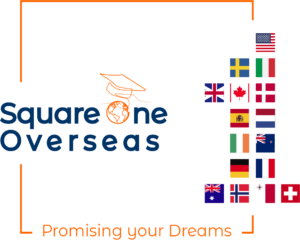STUDY IN USA

Unlock Your American Dream
Why Study in USA
The USA is renowned for its prestigious universities and diverse academic programs, offering students unparalleled opportunities for research, innovation, and career advancement. Studying in the USA opens doors to a world where your educational experiences go beyond the classroom, equipping you with global perspectives and practical skills.
World-Class Institutions
The USA houses many of the world's top universities, known for their research facilities and distinguished faculty.
Cultural Diversity
Experience a melting pot of cultures, enhancing your global understanding and networking with peers from around the globe.
Experience World-Class Education
More Info
Discover everything you need to embark on your educational journey in the USA, from choosing the right program to navigating visa processes and settling in.
- Benefits
- Courses & Universities
- Requirements
- Intakes in USA
- Cost
- Scholarships
- Living Expenses
Benefits
American universities are not just about academic excellence; they're about shaping leaders and innovators. With a focus on hands-on learning, critical thinking, and flexibility in choosing your course path, you're not just earning a degree; you're preparing for a global career. The campus life in the USA is vibrant, offering numerous extracurriculars, internships, and networking opportunities to enrich your study experience.
- Diverse study programs
- Innovative research opportunities
- Rich campus life
- Global networking platform
Courses & Universities
International students often pursue fields that not only match their interests but also offer strong career prospects. Popular areas of study include Computer Science, Business Administration/Management, Engineering, Health Sciences, Economics, Communications/Media Studies.
Top Universities to Study in the US (QS Ranking 2024)
| S.NO. | Institution | QS RANKING 2024 (Globally) |
| 1 | Massachusetts institute of Technology (MIT) | 1 |
| 2 | Harvard University | 4 |
| 3 | Stanford University | 5 |
| 4 | University of California, Berkeley (UCB) | 10 |
| 5 | University of Chicago | 11 |
| 6 | University of Pennsylvania | 12 |
| 7 | Cornell University | 13 |
| 8 | California Institute of Technology (Caltech) | 15 |
| 9 | Yale University | 16 |
| 10 | Princeton University | 17 |
Requirements
To secure a U.S. student visa, applicants must fulfill a series of requirements aimed at verifying their academic commitment and financial stability. The process starts with acceptance into an SEVP-certified institution, after which the student needs to handle several bureaucratic steps.
- Acceptance by an SEVP-approved school: Ensure the school is authorized to host international students.
- Form I-20: Complete and sign this form provided by the institution.
- SEVIS Fee: Pay the mandatory fee for the Student and Exchange Visitor Information System.
- DS-160 Form: Submit the online non-immigrant visa application.
- Proof of Financial Support: Provide bank statements or letters proving financial aid or scholarships.
- Ties to Home Country: Show intent to return home after studies through various documentation.
- Academic Qualifications: Submit transcripts and diplomas.
- English Proficiency: Provide TOEFL or IELTS scores to prove language proficiency.
Admission Periods or Intakes in USA
In the United States, colleges and universities generally offer two primary admission periods during the year:
- Fall Intake: This is the main intake, commencing in August or September. It is the most popular among students.
- Spring Intake: Starting in January or February, this is the second major intake.
While these are the standard times for new students to begin their studies, the specific start dates can differ from one institution to another. Additionally, some schools provide a third, less common intake during the Summer, which typically starts around May or June.
Cost
In the U.S., universities are categorized into public-funded and private institutions, with tuition costs generally lower at public universities compared to private ones. Tuition fees vary widely depending on the type of college and the program pursued. Annually, students might pay anywhere from $15,000 to $50,000, with specific costs breaking down as follows:
Program | Tuition fees in USD (approximate) |
Community colleges | $6,000 to $20,000 per year |
Undergraduate | $20,000 to $40,000 per year |
Graduate program | $20,000 to $45,000 per year |
Doctoral degree | $28,000 to $55,000 per year |
Scholarships
To study in USA, students can apply to several scholarship programs. Most of these programs can provide 100% tuition cost. Some of the most prestigious scholarships are
- Fulbright-Nehru Scholarship
- Tata Scholarship
- Gates Millennium Scholars Program
- Hubert Humphrey Fellowship Program
These scholarships support a broad spectrum of academic fields and promote educational exchanges that enhance mutual understanding between countries.
Living Expenses
In the USA, living costs vary significantly based on location, with urban areas typically more expensive than suburban and rural areas. Students need to consider several expenses beyond tuition, which can vary according to personal needs and lifestyle choices.
Essential budget items include rent, food, health insurance, transportation, and educational supplies, each contributing to the overall cost of living. Creating a detailed budget with estimates for these expenses is crucial for effective financial planning.
Here are some indicative yearly costs for major expenses:
- Rent/Accommodation: $2,600 - $4,000
- Food and Groceries: $2,500 - $4,000
- Health Insurance: $1,000 - $2,000
- Transportation: $900 - $1,500
- Books and Supplies: $1,000 - $1,700
- Clothes and Footwear: $700 - $1,000
- Utilities: $1,000 - $1,300
- Miscellaneous: $3,000 - $4,000
These figures can help students prepare financially for life in different parts of the United States.
Note – The figures or approximate cost can vary based on the region and individual life style.
QUESTIONS / ANSWERS
Frequently asked questions
Yes, international students on F-1 visas are allowed to work on-campus up to 20 hours per week during the academic term and full-time during holidays and vacation periods. Off-campus employment is restricted and typically requires authorization.
In the USA, colleges typically offer only undergraduate degrees and focus more on smaller, more intimate educational settings, while universities offer both undergraduate and graduate degrees and include larger research programs.
International students should consider factors such as program accreditation, faculty expertise, university facilities, location, size, available resources for international students, and specific academic interests when choosing a program or university.
Yes, most American institutions accept the Indian 10+2+3 education system for admission into postgraduate programs.
American institutions commonly accept TOEFL and IELTS scores, and some may also accept PTE Academic and Duolingo English Test scores.
The minimum IELTS score required to study in the US typically ranges from 6.0 to 7.5, depending on the institution and program.
